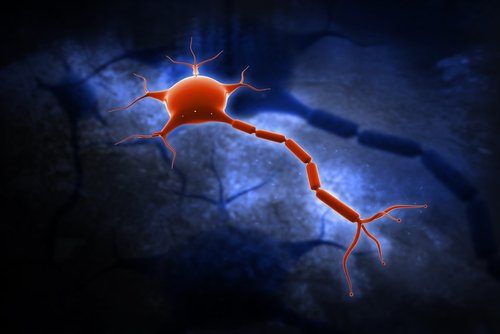Small Molecule Embelin Rescues CMT Disease Features in Fly Model, Study Shows
Written by |

Embelin, a small molecule, rescues hallmark features of Charcot-Marie-Tooth (CMT) disease by stopping a mutant protein from entering the cell’s nucleus, a study in a fly model of the disease showed.
Titled “Transcriptional dysregulation by a nucleus-localized aminoacyl-tRNA synthetase associated with Charcot-Marie-Tooth neuropathy,” the study was published in the journal Nature Communications.
Charcot-Marie-Tooth (CMT) disease is the most common genetic neuromuscular condition, affecting approximately 1 in 2,500 individuals. People with this disease suffer from weakness and wasting of the limb muscles, which leads to progressive impairment of movement, sensory loss, and skeletal deformities.
CMT develops due to specific mutations in the genetic code. Scientists have identified more than 80 genes in which mutations are linked to the development of CMT.
Mutations in genes that code for aminoacyl-tRNA synthetases (aaRSs) are one of the most common mutations associated with CMT. AaRSs are enzymes that are expressed all over the body and are necessary for life, since they are involved in the production of proteins.
Usually, aaRSs are located in a region of the cell known as the cytoplasm, where they carry out their function in protein production. However, in some instances, aaRSs also are found in a different region known as the nucleus — which controls the cell — where they regulate gene expression.
“The nucleus is the site for gene expression or transcription to take place, which made this finding of special interest to us,” Xiang-Lei Yang, PhD, lead author of the study and a scientist with the Scripps Research Institute, explained in a press release. “Transcription regulates the identity of cells and cell-specific maintenance programs, and if something goes awry during this process, disease can result.”
Tyrosyl-tRNA synthetase (TyrRS), a type of aaRS that has been linked to CMT disease, is known to enter the nucleus when the cell is under stress to regulate gene expression.
In this study, researchers set out to investigate what role the nuclear localization of TyrRS plays in the disease mechanisms that lead to the development of CMT. They used a Drosophila fly model of CMT disease expressing mutant TyrRS.
First, the researchers showed that mutations in TyrRs lead to changes in the 3D conformation of the protein. This change in protein structure in turn leads to aberrant overactivation of E2F1 in the nucleus. E2F1 is a transcription factor, which means that it regulates expression of a wide of variety of genes. Consequently, researchers found that the presence of mutant TyrRS led to a significant dysregulation of gene expression.
Next, researchers inhibited E2F1 in the fly model, which led to a reduction in the toxicity. However, this was not sufficient to alleviate the motor deficits.
When researchers then used a genetic approach to prevent the mutant TyrRS from entering the nucleus, they found that this led to a complete rescue of behavior, physiology, and gene expression in the fly CMT model.
As Drosophila models can be used to assess the therapeutic potential of small molecule compounds, researchers used the small molecule inhibitor embelin to block the mutant TyrRS from entering the nucleus.
The results indicate that embelin rescued the specific disease features in the CMT flies.
Therefore, “these data highlight that TyrRS may contribute to transcriptional regulation in neurons, and suggest a therapeutic strategy for CMT,” the researchers said.
Yang said the discovery is most immediately relevant for patients who have a form of CMT known to be caused by mutant TyrRS. However, the findings may translate to subtypes caused by other mutant aaRS enzymes that also may be treated by embelin.
“This work paves the way for developing a viable therapy for CMT patients affected by TyrRS mutations,” Yang said. “We’re excited to advance this research by further validating the therapeutic approach and finding the best-possible pharmaceutical product to inhibit this enzyme from entering the nucleus. We also will investigate whether the nuclear relevance can be generalized to other CMT subtypes.”




